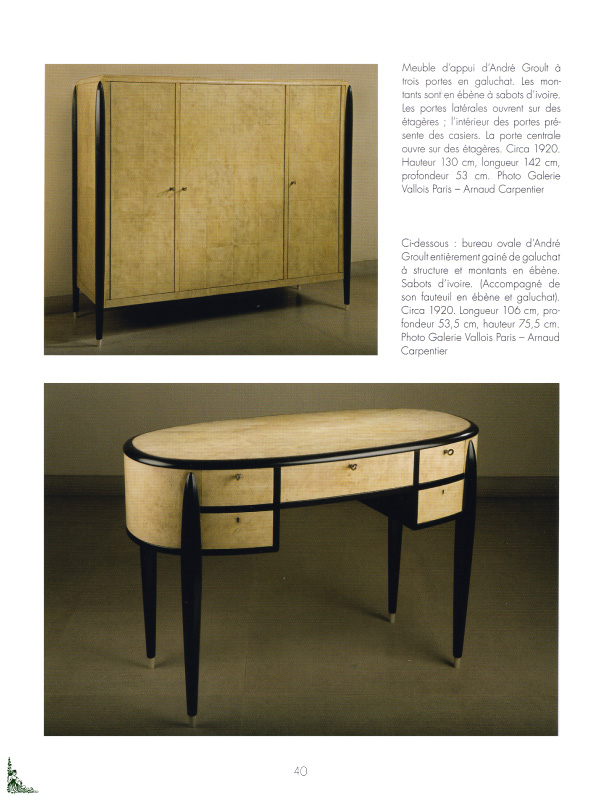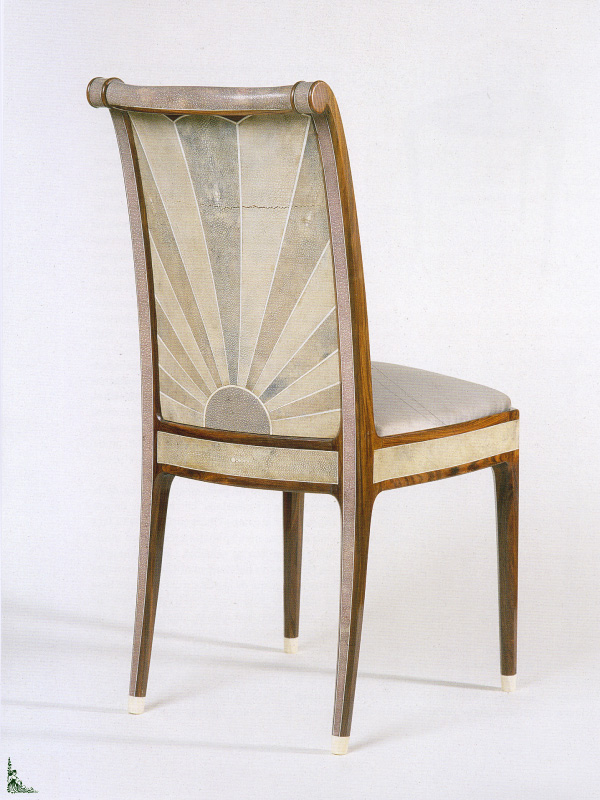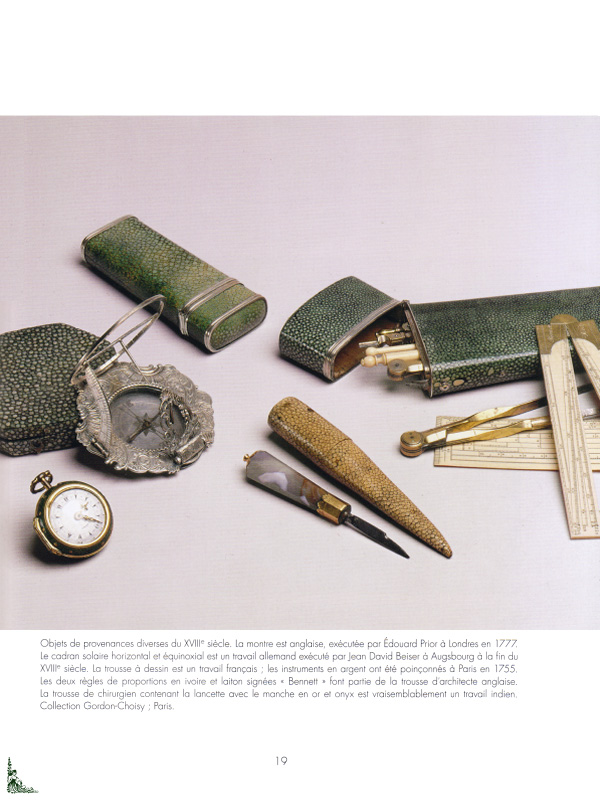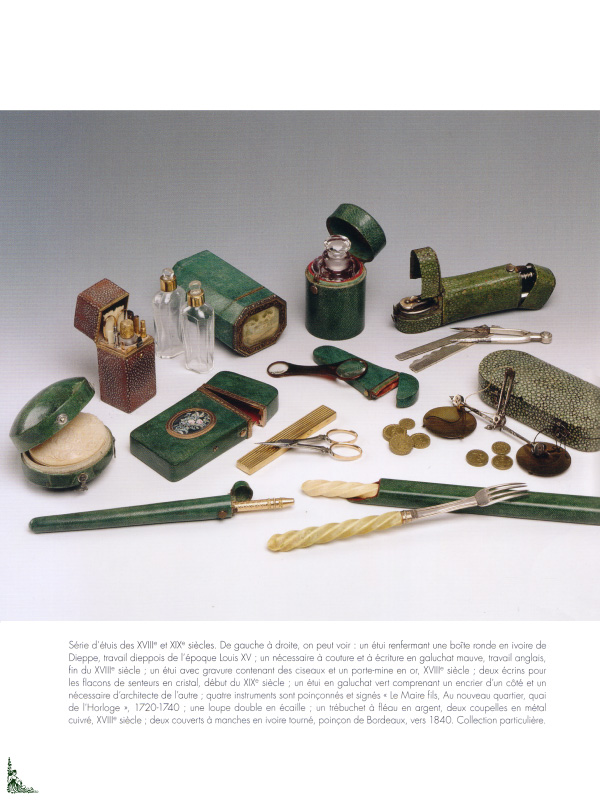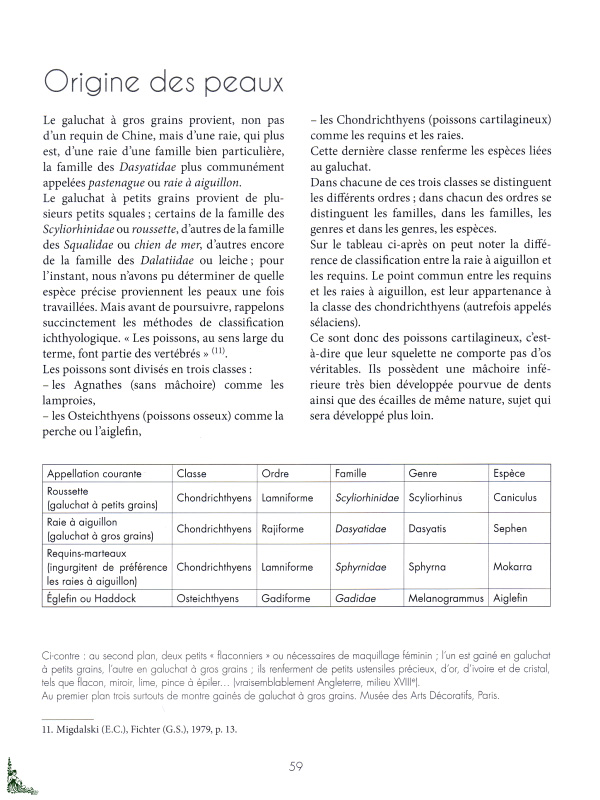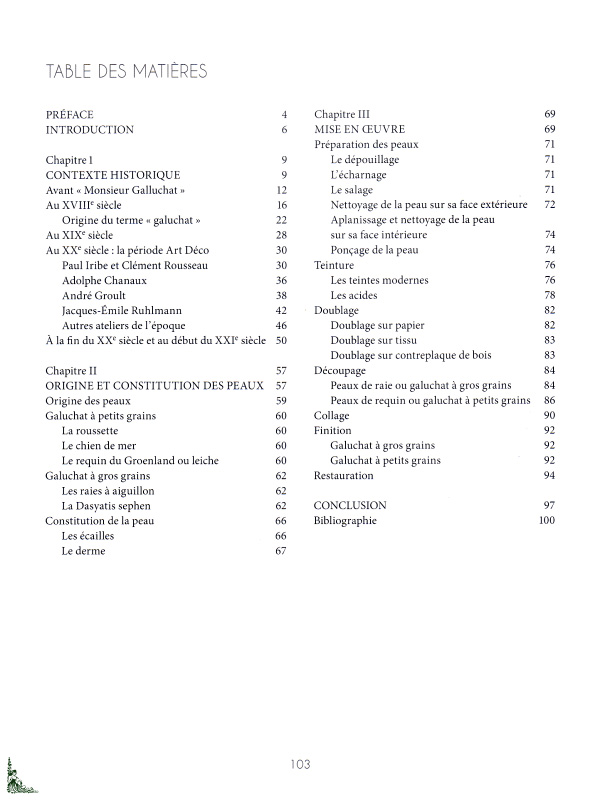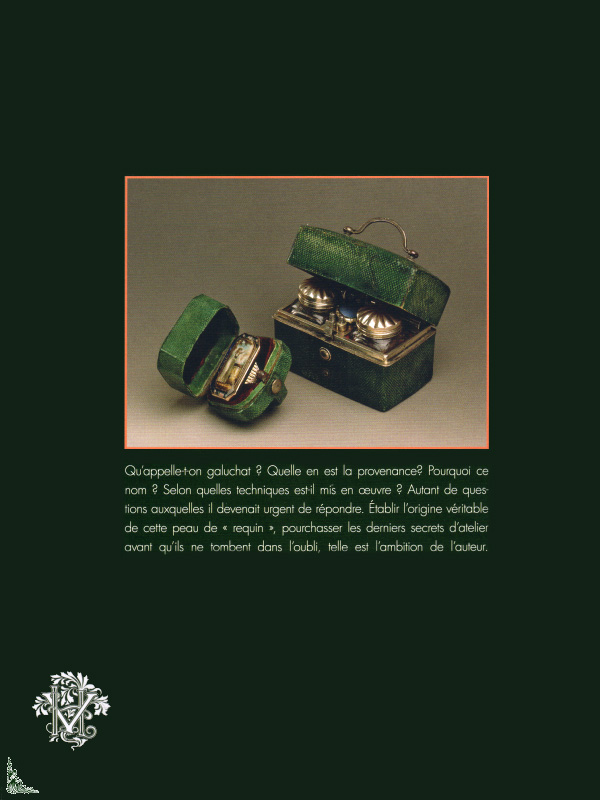Shagreen
Informazioni sul libro
| Autore : | Jean Perfettini |
| Editore : | Vial (2016) |
| Legatura : | Hardcover (104 full color pages) 8 inches x 10 inches |
| Lingua : | French |
| ISBN : | 978-2-85101-204-3 |
| EAN : | 9782851012043 |
Descrizione
Shagreen, by J. Perfettini, Ed. Vial, 8 inches x 10 inches ( 21 cm x 25 cm ), hardcover book with 104 full color pages
This book of 104 pages with great color illustrations presents the art of shagreen, a luxurious decorative material known since the 18th century in France and in Japan (Same-Nuri).
Shagreen is a fish skin (dogfish, various rays and sharks) the use of which is very old, especially in the Middle East and Asia.
In Europe, it has long been used as an abrasive, and was made fashion in the 18th century in leather workshop by Jean-Claude Galluchat which associates with luxury craftsmanship and left his name.
The 19th century honors the shagreen, but its use is associated mainly to the Art Deco period, when Ruhlmann and other great designers use it in furniture. He then fell into oblivion, and the technique of its implementation was lost.
This book presents the various techniques used for decorative art, process, preparation of skins, coloring, cutting, gluing, finish and restoration. Fish leather becomes trend and manufacturing grows throughout Europe.
Contents:
- Foreword
- Introduction
- Before "Monsieur Galuchat"
- At the 18th century
- At the 19th century
- At the 20th century: The Art-Deco period
- At the end of the 20th century and beginning of the 21st century
- Origin of the skins
- Shagreen with small grains
- Shagreen with large grains
- Constitution of the skin
- Preparing skins
- Coloring
- Dubbing
- Cutting
- Gluing
- Finish
- Restoration
- Bibliography
The French texts are written by Jean Perfettini.
 Description française
Description française
Le Galuchat
Détails du livre
| Auteur : | Jean Perfettini |
| Éditeur : | Vial (2016) |
| Reliure : | Relié (104 pages couleurs) 21 cm x 25 cm ( 8 inches x 10 inches ) |
| Langue(s) : | Français |
| ISBN : | 978-2-85101-204-3 |
| EAN : | 9782851012043 |
Description
Le Galuchat, de J. Perfettini, Ed. Vial, 21 cm x 25 cm, relié avec 104 pages couleur
Ce livre de 104 pages contenant de nombreuses illustrations couleur, initie à la connaissance du matériau mystérieux qu'est le galuchat, utilisé depuis le XVIIIe siècle en France et au Japon (Same-Nuri)
Le galuchat est une peau de poisson (roussette, chien de mer, diverses raies et requins) dont l'utilisation est très ancienne, notamment au Proche-Orient et en Asie.
En Europe, elle était utilisée depuis longtemps comme abrasif, et fut mis à la mode au XVIIIe siècle en gainerie par Jean-Claude Galluchat qui l'associa à l'artisanat de luxe et lui laissa son nom.
Le XIXe siècle fit honneur au galuchat, mais son utilisation reste surtout associée la période Art Déco, quand Ruhlmann et d'autres grands décorateurs l'utilisèrent dans le mobilier. Il tomba ensuite dans l'oubli, et la technique de sa mise en oeuvre fut perdue.
Cet ouvrage présente les différentes techniques d'utilisation à usage décoratif, les techniques de mise en oeuvre, préparation, teinture, doublage, découpage, collage, finition et restauration. Le cuir de poisson redevient tendance et sa fabrication se développe partout en Europe.
Principaux chapitres de l'ouvrage :
- Préface
- Introduction
- Avant "Monsieur Galuchat"
- Au XVIIIe siècle
- Au XIXe siècle
- Au XXe siècle : la période Art-Déco
- À la fin du XXe siècle et début du XXIe siècle
- Origine des peaux
- Galuchat à petits grains
- Galuchat à gros grains
- Constitution de la peau
- Préparation des peaux
- Teinture
- Doublage
- Découpage
- Collage
- Finition
- Restauration
- Bibliographie
Les textes en Français sont de Jean Perfettini.



